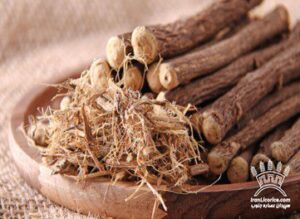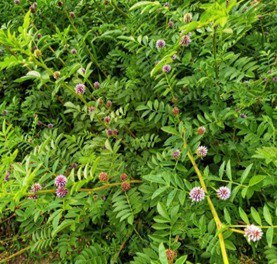Ark of Taste

DATA SHEET PRODUCT ORIGIN For Plants
*Product name Common name of the product: Liquorice or licorice Local name: Shirin Boia/ Makh / Shirin Bayan English name: Liquorice |
*Category Category: ☐ Cocoa ☐ Coffee ☐ Cereals, grains and flours xAromatic herbs and spices ☐ Fruit ☐ Fish ☐ Legumes ☐ Vegetables ☐ Tea ☐ Vines ☐ Other tree please describe: |
*Scientific name Glycyrrhiza glabra Family: Fabaceae Genus: Glycyrrhiza |
*Production area: Western Asia, North Africa, and Southern Europe. In most provinces of Afghanistan, the major production centers are Badakhshan, Takhar, Kunduz, Balkh, Jawzjan, Faryab, Sarpol, Herat, Bamyan and Badghis |
*Seasonality HARVESTING: Aug, Sep, Oct |
Product analysis VISUAL: Liquorice is a herbaceous perennial, growing to 1 metre (40 in) in height, with pinnate leaves about 7–15 cm (3–6 in) long, with 9–17 leaflets. The flowers are 8–12 mm (5⁄16–1⁄2 in) long, purple to pale whitish blue, produced in a loose inflorescence. The fruit is an oblong pod, 20–30 mm (3⁄4–1+1⁄8 in) long, containing several seeds.[17] The roots are stoloniferous TASTE AND CONSISTENCY: The root of Liquorice is used as a flavouring in confectionery, tobacco, beverages, and pharmaceuticals, and is marketed as a dietary supplement. |
Product description : Shirin Boia is a plant that grows in some parts of the world, including Afghanistan. Shirin Boia grows naturally in areas where the annual rainfall is 400 to 1160 mm and every year, most of the country’s products are exported. The root part of this plant is mostly used, which has a substance called “Glycerizin” that causes its sweet taste. It is approximately 30-50 times sweeter than sugar. Due to the indiscriminate harvesting of the roots, this plant is on the verge of extinction and must be harvested from nature in a controlled manner. In traditional medicine, Licorice has long been widely used as an effective herbal remedy for heartburn, stomach ulcers, acid reflux, cough and sore throat, colds, bruises and muscle cramps, hair loss, and skin problems. On the other hand, licorice increases endurance and physical strength and strengthens the immune system. Due to the anti-bacterial, anti-viral and anti-inflammatory properties of this plant, it is effective in treating eczema and psoriasis, redness and burning of the skin and other skin problems. This plant also contains flavonoids that improve bacterial infections. Licorice is a plant that also has edible uses. This plant is mostly used in foods and drinks such as teas, syrups, and soft drinks. Licorice root decoction is one of the old and widely used teas that has many fans and is used for better functioning of the digestive system and treatment of sore throat. This plant is also used in mixed spices. The use of licorice in chocolate, sweets and candies, ice cream, pastilles and chewing gum has a long history, on the other hand, by using licorice in these products, you can benefit from its medicinal properties. |
Edible parts and Preserving *Part (e.g. fruit, stem, seeds, etc.): Roots Ways of preserving (curing, drying, fermentation): Drying *Ways of cooking (e.g. boiled, baked, roasted, etc.): In the form of spice or essence |
Culinary uses Licorice is a plant that also has edible uses. This plant is mostly used in foods and drinks such as teas, syrups, and soft drinks. Licorice root decoction is one of the old and widely used teas that has many fans and is used for better functioning of the digestive system and treatment of sore throat. This plant is also used in mixed spices. The use of licorice in chocolate, sweets and candies, ice cream, pastilles and chewing gum has a long history, on the other hand, by using licorice in these products, you can benefit from its medicinal properties. |
Product history (social, religious, cultural and economic importance) Licorice is one of the plants that have edible and medicinal uses in Afghanistan and other countries in the form of spices, flavors and essential oils. This plant is naturally produced in our country and has a long history. By exporting the roots of this plant, a large amount of foreign currency is obtained in the country every year. Shirin Bayan grows and develops in most provinces of Afghanistan, the major production centers are Badakhshan, Takhar, Kunduz, Balkh, Jawzjan, Faryab, Sarpol, Herat, Bamyan and Badghis provinces. |
Current status: At present, licorice production has decreased and is about to disappear, due to its economic, cultural, food and medicinal value, practical steps must be taken to preserve this product. |
*Photos and illustrations
|
References -Brown, D., ed. (1995). “The RHS encyclopedia of herbs and their uses”. ISBN 1-4053-0059-0 – Hosseini, N., Maleki rad, A., and Abdullahy, M.l. 2015. Recognition and application of medicinal and aromatic plants. Agricultural Education Research Publications. |
Longitude: Latitude: |
Name of Nominator: Ramin Nazarian, Yosof Jami, Nader Maleki Phone: Email: ra_nazarian@yahoo.com |



